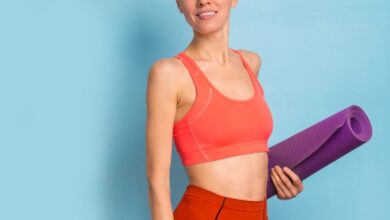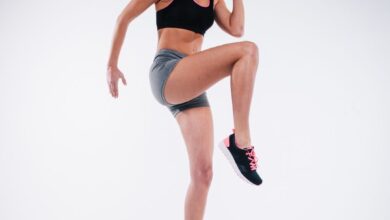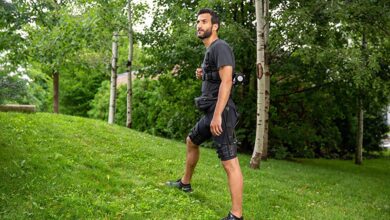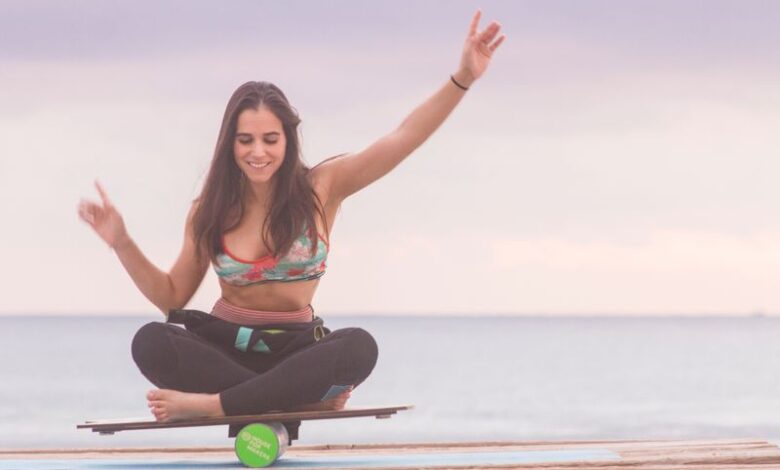
Surfing workouts at home are a fantastic way to stay active and hone your surfing skills, even when the waves are flat. This comprehensive guide will equip you with the knowledge and exercises to replicate the movements and demands of surfing in the comfort of your own space. We’ll explore the benefits, equipment options, core strength exercises, upper body and leg routines, flexibility training, and structured workout programs for beginners, intermediates, and advanced surfers.
From finding the perfect home gym equipment to mastering essential surfing exercises, this guide will empower you to achieve your surfing fitness goals. We’ll delve into nutrition and recovery strategies to maximize your results. Get ready to ride the wave of fitness, no matter the weather.
Introduction to Surfing Workouts at Home
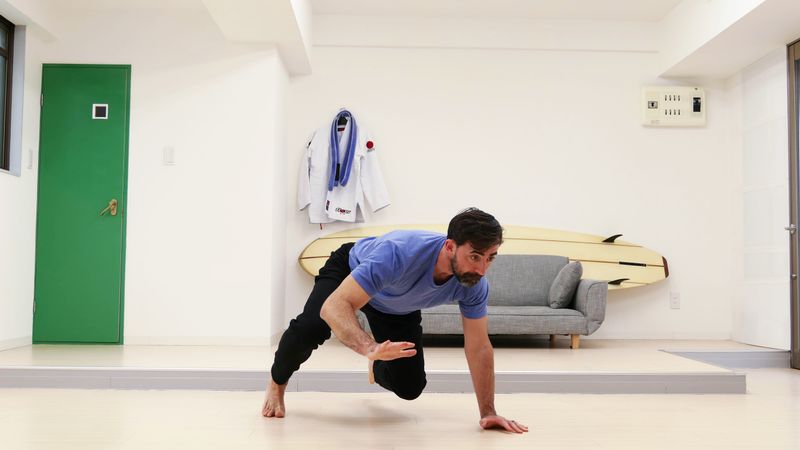
Surfing is a demanding sport that requires a unique combination of strength, endurance, and balance. Replicating the movements and physical demands of surfing at home offers a valuable way to enhance fitness and improve performance in the water. This approach allows for consistent training regardless of weather conditions or access to waves, fostering a routine that contributes significantly to overall well-being.Home surfing workouts are effective because they target specific muscle groups and movements used in surfing.
By replicating the paddling, balance, and core engagement inherent in surfing, these workouts build functional strength, which directly translates to better performance on the board. Consistency and progression are key to achieving tangible results. By gradually increasing intensity and duration, you’ll see improvements in your surfing abilities and overall fitness.
Benefits of Surfing Workouts
Surfing workouts provide a comprehensive approach to fitness, enhancing cardiovascular health, muscle strength, and core stability. These benefits extend beyond the physical, contributing to mental well-being and overall confidence. The dynamic nature of surfing, requiring continuous movement and adaptation, improves coordination and balance, which are transferable to daily life.
Mimicking Surfing Movements at Home
Replicating surfing movements at home involves understanding the specific motions and demands of the sport. Paddling exercises, such as using resistance bands or swimming, can replicate the powerful strokes used to propel yourself through the water. Balance exercises, including single-leg squats and lunges, mimic the dynamic balance required while riding a wave. Core exercises, like planks and Russian twists, strengthen the core muscles crucial for maintaining stability and power.
Importance of Consistency and Progression
Consistency is paramount for any fitness goal, and surfing workouts are no exception. A consistent routine, even if it’s just 30 minutes a few times a week, creates a foundation for improvement. As your strength and endurance increase, progressively challenging yourself with more intense workouts and longer durations will lead to noticeable gains. This gradual progression is essential for preventing injuries and maximizing results.
Home Surfing Workout Equipment
Numerous pieces of equipment can be incorporated into home surfing workouts, enhancing the effectiveness and variety of your training. These tools provide targeted resistance, allowing you to simulate the forces encountered in surfing. This versatility enables a customized approach to fitness, tailoring workouts to individual needs and preferences.
Comparison of Home Surfing Workout Equipment
| Equipment Type | Pros | Cons |
|---|---|---|
| Resistance Bands | Affordable, portable, adjustable resistance, versatile for various exercises. | Limited strength progression, may not fully replicate surfing’s dynamic forces. |
| Jump Rope | Low-cost, effective for cardio, improves footwork and coordination. | Can be challenging to maintain proper form, might not provide enough strength training. |
| Stability Ball | Enhances core engagement, improves balance, adaptable for various exercises. | Requires space, proper form is crucial to avoid injury. |
| Kettlebells | Build strength and power, suitable for compound movements, good for full-body training. | May be more expensive than other options, requires proper technique. |
This table highlights the advantages and disadvantages of different equipment options, helping you choose the best tools to support your home surfing workouts. Careful consideration of these factors ensures you select equipment that best aligns with your needs and goals.
Core Strength and Stability Exercises
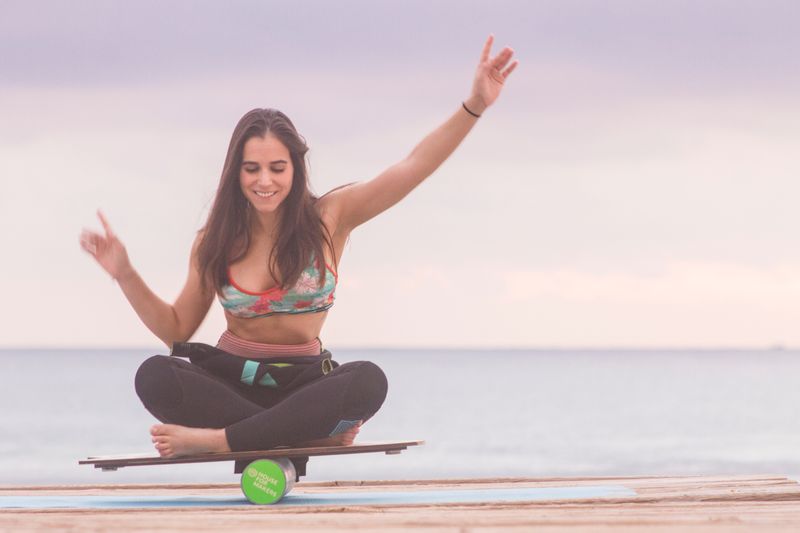
Surfing demands a unique blend of strength, balance, and flexibility. A strong core is the cornerstone of this athletic pursuit, providing stability and control while riding the waves. Developing core strength translates directly to improved balance, posture, and ultimately, better performance on the board. These exercises are tailored to build this crucial component of your surfing fitness regimen.Core strength isn’t just about visible abdominal muscles; it’s about the deep-seated muscles that stabilize your spine and pelvis.
These muscles work synergistically to maintain balance and control during the dynamic movements involved in surfing, like paddling, turning, and popping up. Improving this stability is key to preventing injuries and enhancing your overall surfing experience.
I’ve been exploring surfing workouts at home lately, and it’s surprisingly effective! While researching different exercises, I stumbled across some fascinating research linking appendectomies to a slightly elevated risk of Parkinson’s disease later in life. Parkinson’s disease is more common after appendectomy – a bit of a mind-bender, but it just goes to show how interconnected our health is.
Regardless, I’m finding surfing workouts are a great way to stay active and improve my balance, which is important for overall well-being.
Core Strength Exercises for Surfing
Core exercises are essential for surfers, enhancing stability and balance during maneuvers. Proper form and controlled movements are paramount to maximize results and prevent injuries. Varying exercise intensity and type can cater to different fitness levels.
Finding ways to stay active at home is key for surfing workouts, especially when dealing with health conditions like mine. It’s been a real challenge juggling my work responsibilities with the difficulties of my job with multiple sclerosis, difficulties of your job with multiple sclerosis , but I’ve discovered some fantastic surfing-inspired workouts that I can do from my living room.
These at-home routines are helping me maintain my fitness and surf-ready body.
Plank Variations
The plank is a fundamental exercise for core engagement. It strengthens the entire core, including the rectus abdominis, obliques, and back muscles. Maintaining a straight line from head to heels is crucial. Different plank variations can target specific muscle groups or adjust the intensity.
- Standard Plank: Hold a straight line from head to heels, resting on forearms and toes. Engage your core and maintain a neutral spine throughout the hold. This builds overall core strength.
- Side Plank: Support your body on one forearm and the side of your foot. Maintain a straight line from head to heels, engaging your oblique muscles. This targets the side core muscles, vital for lateral stability in surfing.
- Plank with Leg Raises: Perform a standard plank and raise one leg off the ground, maintaining a straight line. Lower the leg back down and repeat with the other leg. This variation challenges the core further, building stability and strength.
Bird Dog
The bird dog exercise is a fantastic way to develop core strength and stability. It improves spinal mobility and postural awareness, which are crucial for surfing. Controlled movements are vital to prevent injury and maximize benefits.
- Start on all fours, with hands directly under shoulders and knees under hips.
- Extend one arm forward and the opposite leg back, keeping your back straight and core engaged.
- Hold for a second, then return to the starting position and repeat on the other side.
Bicycle Crunches
Bicycle crunches are a dynamic core exercise that targets both the upper and lower abdominal muscles. This exercise improves rotational stability, mimicking the movements required during surfing turns and maneuvers.
- Lie on your back with knees bent and hands behind your head.
- Bring your elbow to the opposite knee, alternating sides. This creates a rotational movement.
- Maintain a controlled movement, engaging your core throughout the exercise.
Core Exercise Table
| Exercise | Sets | Reps | Rest Time |
|---|---|---|---|
| Standard Plank | 3 | 30-60 seconds | 60 seconds |
| Side Plank (each side) | 3 | 30-60 seconds | 60 seconds |
| Bird Dog (each side) | 3 | 10-15 reps | 30 seconds |
| Bicycle Crunches | 3 | 15-20 reps | 30 seconds |
Upper Body Strength and Endurance Exercises
Surfing demands powerful and sustained paddling strokes. Building upper body strength and endurance is crucial for maintaining momentum, propelling yourself through the water, and generating the necessary force for maneuvering your board. These exercises will target the specific muscles involved in these actions, improving your overall performance in the water.Upper body strength training for surfing isn’t just about building raw power; it’s about developing the endurance to sustain those powerful strokes for extended periods.
The exercises Artikeld below are designed to build the strength and endurance necessary to execute effective paddling techniques. By focusing on proper form and controlled movements, you’ll not only enhance your paddling abilities but also minimize the risk of injury.
Exercises Mimicking Surfing Paddling
Developing upper body strength is key to powerful paddling strokes in surfing. These exercises replicate the movements required for efficient and effective paddling in the water. Proper form is paramount to maximizing muscle engagement and preventing injuries.
- Dumbbell Rows: This exercise targets the back muscles, particularly the latissimus dorsi, which are essential for pulling motions in surfing. Keeping your back straight and core engaged is crucial for proper form. Using dumbbells allows for greater control and variation in intensity. Ensure you maintain a controlled movement throughout the exercise to avoid injury. Focus on pulling the weight towards your chest, rather than just swinging the arms.
- Pull-ups (or assisted pull-ups): Pull-ups are a classic exercise for building back and arm strength, directly applicable to the pulling motion of paddling. The key is to maintain a straight line from your head to your heels. If you’re unable to do pull-ups, assisted pull-ups provide a suitable alternative to build strength progressively. Consistent practice will progressively increase your strength and stamina.
- Overhead Press: This exercise strengthens the shoulders, front deltoids, and triceps, vital for maintaining a powerful paddling position and generating upward force. Start with a light weight and focus on maintaining a controlled movement. Gradually increase the weight as your strength improves.
- Dumbbell Bicep Curls: These exercises specifically target the biceps, which are involved in the paddling stroke. Concentrate on controlled movements to avoid injury and maximize muscle activation. Focus on the contraction of the biceps, not just the swinging of the weight.
- Chest Flyes: This exercise targets the pectoral muscles, essential for maintaining the proper paddling posture. By isolating the chest muscles, this exercise improves upper body strength, directly applicable to the pushing and paddling motions in surfing. Start with a light weight to ensure proper form and control, and progressively increase the weight as you gain strength.
Importance of Proper Form and Posture
Maintaining proper posture and form during these exercises is crucial to avoid injuries and maximize results. A strong core and balanced posture provide a solid foundation for your upper body movements.
- Maintaining a neutral spine: Avoid rounding your back or arching it excessively during exercises. Keeping your spine straight and aligned helps prevent injuries and ensures the targeted muscles are working effectively.
- Engaging your core: Actively engaging your core muscles helps stabilize your torso and ensures the upper body exercises are performed with controlled movements. A strong core is crucial for a stable platform for upper body movements. This minimizes strain on the spine and surrounding muscles.
- Squeezing your shoulder blades: Squeezing your shoulder blades together during exercises like rows helps to engage the back muscles more effectively and maintains a stable shoulder position. This prevents injuries and improves the efficiency of your upper body movements.
Workout Table
| Exercise | Sets | Reps | Rest Time |
|---|---|---|---|
| Dumbbell Rows | 3 | 8-12 | 60-90 seconds |
| Pull-ups (or assisted) | 3 | 8-12 | 60-90 seconds |
| Overhead Press | 3 | 10-15 | 60-90 seconds |
| Dumbbell Bicep Curls | 3 | 12-15 | 60 seconds |
| Chest Flyes | 3 | 12-15 | 60 seconds |
Leg Strength and Power Exercises: Surfing Workouts At Home
Developing powerful legs is crucial for surfing, enabling explosive movements, quick turns, and maintaining balance during maneuvers. Strong legs translate to enhanced performance in the water, providing the necessary force for powerful paddling and riding waves. This section explores effective leg exercises to build the strength and power needed for optimal surfing.
Essential Leg Exercises for Surfing
Strong leg muscles are the foundation of explosive surfing movements. Exercises that target the quads, hamstrings, glutes, and calves are vital for power and stability. These exercises improve the ability to generate force rapidly, which is crucial for quick turns, powerful paddling, and maintaining balance during maneuvers. Proper form is paramount to avoid injury and maximize results.
Variations for Different Fitness Levels
Beginner surfers can start with bodyweight exercises, gradually increasing the intensity and difficulty as their fitness improves. Intermediate surfers can incorporate resistance bands or light weights to challenge their muscles further. Advanced surfers can utilize heavier weights or more complex exercises to build maximum power.
Leg Exercise Variations
- Squats: A fundamental exercise for lower body strength, squats work the quads, hamstrings, and glutes. Variations include goblet squats, front squats, and back squats, each targeting specific muscle groups with different levels of intensity.
- Lunges: Lunges target the quads, hamstrings, and glutes, promoting leg strength and balance. Forward lunges, reverse lunges, and lateral lunges provide different challenges and muscle engagement.
- Jump Squats: Explosive movements like jump squats improve power and explosiveness. These are essential for quick turns and powerful paddling in surfing.
- Bulgarian Split Squats: Bulgarian split squats enhance stability and strength in the legs, especially the quads and glutes, while working on balance. These are a crucial exercise for building strength and power.
- Deadlifts: Deadlifts are an advanced exercise that works the entire posterior chain, including the glutes, hamstrings, and lower back. These contribute to powerful paddling and propulsive movements in surfing.
- Box Jumps: Box jumps are excellent for building explosive power and strength in the legs. They help develop the ability to generate force quickly, which is essential for powerful movements during surfing.
Importance of Proper Form and Controlled Movements
Maintaining proper form during leg exercises is crucial to prevent injuries and maximize results. Focus on controlled movements, engaging the targeted muscles, and maintaining a stable posture throughout each repetition. Using proper form helps prevent injuries like strains, tears, and sprains.
Leg Exercise Program
This table Artikels a sample leg workout program for surfers, suitable for various fitness levels. Adjust sets, reps, and rest times based on your individual needs and progress.
| Exercise | Sets | Reps | Rest Time |
|---|---|---|---|
| Goblet Squats | 3 | 10-12 | 60-90 seconds |
| Bulgarian Split Squats | 3 | 8-10 per leg | 60-90 seconds |
| Jump Squats | 3 | 8-10 | 90-120 seconds |
| Walking Lunges | 2 | 10-12 per leg | 60-90 seconds |
| Glute Bridges | 3 | 12-15 | 60 seconds |
Flexibility and Mobility Exercises
Unlocking your full surfing potential goes beyond just strength and power. Flexibility and mobility are crucial for maintaining proper form, preventing injuries, and feeling your best in the water. These exercises are vital for improving body awareness and ensuring smooth, fluid movements, essential for catching waves with precision and grace.Effective flexibility and mobility training is not just about stretching; it’s about actively improving the range of motion in your joints and the elasticity of your muscles.
This allows for greater efficiency and control during your surfing maneuvers, which translates to improved performance and a reduced risk of strains and sprains. Consistent practice will lead to a greater sense of body awareness, helping you anticipate and react to the demands of the wave.
Stretching Routines for Surfing
Regular stretching is fundamental for maintaining flexibility and preventing injuries. Dynamic stretches prepare your muscles for activity, while static stretches improve flexibility and range of motion. A well-rounded stretching routine should incorporate both.
Dynamic Stretching
Dynamic stretches involve controlled movements that gradually increase the range of motion in your joints. These are excellent warm-up exercises, preparing your muscles for the demands of surfing. Examples include arm circles, leg swings, torso twists, and torso rotations. Performing these movements before a workout or surfing session helps prevent muscle stiffness and soreness. Incorporating dynamic stretches into your routine will enhance your body awareness, improving your responsiveness and agility in the water.
Static Stretching
Static stretches involve holding a position that stretches a specific muscle group. This type of stretching is crucial for improving flexibility and range of motion. By holding the stretch for a period of time, you increase the muscle’s elasticity, reducing the risk of injury and improving overall body awareness. This improved range of motion translates to smoother movements in the water.
For example, holding a hamstring stretch, quad stretch, or triceps stretch can greatly improve your flexibility.
Sample Stretching Routines, Surfing workouts at home
These routines target different muscle groups crucial for surfing. Remember to hold each stretch for 20-30 seconds.
- Upper Body Routine: Shoulder rotations, arm circles, triceps stretches, chest stretches, and wrist stretches. These stretches target the muscles responsible for paddling and maintaining balance.
- Core Routine: Torso twists, leg swings, and back stretches. A strong core is essential for maintaining balance and generating power in the water.
- Lower Body Routine: Hamstring stretches, quad stretches, calf stretches, and hip flexor stretches. These stretches target the muscles crucial for paddling, popping up, and maintaining balance.
Flexibility Exercise Schedule
This table provides a suggested schedule for incorporating flexibility exercises into your routine. Adjust the duration and frequency based on your individual needs and progress.
| Exercise | Duration (seconds) | Frequency (days/week) |
|---|---|---|
| Dynamic Stretches (Warm-up) | 5-10 minutes | Daily |
| Static Stretches (Cool-down) | 10-15 minutes | Daily |
| Specific Muscle Group Stretches | 20-30 minutes per group | 2-3 times/week |
Workout Routines and Programming
Surfing demands a unique blend of strength, endurance, and flexibility. Effective home workouts must replicate these demands to translate to improved performance on the waves. This section delves into creating personalized workout routines tailored for different skill levels, ensuring both progression and safety. We’ll explore the importance of rest and recovery, different workout styles, and how to listen to your body.
Finding ways to stay active at home can be a total game-changer, especially for surfing workouts. It’s all about those satisfying waves and powerful movements, even without the ocean! Plus, remembering to incorporate a little bit of “sunday funnies being your best self” sunday funnies being your best self into your routine can make all the difference in staying motivated.
So, keep those surf muscles strong and happy with some creative home workouts!
Workout Routines for Different Levels
Beginner, intermediate, and advanced surfers require varying levels of intensity and complexity in their workouts. This approach ensures appropriate challenges while minimizing risk of injury.
- Beginner Routines focus on foundational movements and building a base of strength and endurance. These routines prioritize proper form over high intensity, enabling surfers to establish healthy exercise habits. Exercises are selected for their simplicity and low impact, facilitating a smooth transition into more demanding workouts.
- Intermediate Routines increase the intensity and duration of exercises, introducing more challenging variations. They incorporate compound movements, targeting multiple muscle groups simultaneously, and progressively increasing the load or resistance. The focus remains on maintaining good form while gradually pushing physical limits.
- Advanced Routines are designed for surfers seeking to maximize performance. They involve higher volumes, more advanced variations of exercises, and increased intensity. Advanced routines incorporate explosive movements, plyometrics, and advanced strength training techniques to enhance power and speed.
Structuring Weekly Workout Schedules
A well-structured weekly schedule optimizes progress and minimizes overtraining. It also considers rest and recovery to avoid plateaus or injuries.
- Consistency is key to seeing results. Choose a schedule that you can realistically maintain throughout the week.
- Progressive Overload is crucial. Gradually increase the intensity, duration, or difficulty of your workouts over time. This allows your body to adapt and improve.
- Rest Days are essential for muscle recovery and preventing injuries. Incorporate at least one full rest day per week, and consider active recovery days, such as light stretching or yoga.
Importance of Rest and Recovery
Rest and recovery are not passive; they are integral to optimal performance and injury prevention. Adequate rest allows the body to repair tissues, rebuild muscle, and improve overall function.
- Muscle Repair: During exercise, muscles experience microscopic tears. Rest allows the body to repair these tears, leading to stronger and more resilient muscles.
- Hormonal Balance: Rest is crucial for hormonal balance, impacting factors like protein synthesis, metabolism, and stress response.
- Injury Prevention: Insufficient rest can lead to muscle soreness, fatigue, and increased risk of injury. Proper recovery reduces these risks.
Comparing Workout Styles and Suitability for Surfing
Different workout styles offer various benefits. The best style depends on individual needs and preferences.
- Bodyweight Exercises: Effective for building strength and endurance without equipment.
- Strength Training: Focuses on building muscle strength and power, crucial for surfing.
- High-Intensity Interval Training (HIIT): Excellent for building endurance and cardiovascular fitness, relevant for surfing.
Listening to Your Body and Adjusting Workouts
Understanding your body’s signals is essential for optimal training.
- Listen to Pain: Don’t push through pain. Rest or modify the workout if you experience pain.
- Monitor Fatigue: Adjust the intensity or duration of workouts based on your level of fatigue.
- Adapt to Changes: Life happens. Be prepared to adjust your workout schedule based on personal circumstances.
Sample Weekly Workout Schedules
| Day | Beginner Routine | Intermediate Routine | Advanced Routine |
|---|---|---|---|
| Monday | Core & Upper Body | Strength Training (Full Body) | HIIT Circuit & Plyometrics |
| Tuesday | Rest or Active Recovery | Flexibility & Mobility | Strength Training (Legs & Core) |
| Wednesday | Leg Strength | Bodyweight Circuit | Advanced Surfing-Specific Drills |
| Thursday | Core & Upper Body | Strength Training (Upper Body) | HIIT Circuit & Plyometrics |
| Friday | Rest or Active Recovery | Flexibility & Mobility | Rest or Active Recovery |
| Saturday | Surf Practice/Light Exercise | Surf Practice/Light Exercise | Surf Practice/Light Exercise |
| Sunday | Complete Rest | Complete Rest | Complete Rest |
Nutrition and Recovery
Fueling your body properly is crucial for maximizing the benefits of your surfing workouts at home. Just like a surfer needs the right waves to ride, your body needs the right nutrients to perform and recover. This section delves into the vital role of nutrition in supporting your home surfing training, emphasizing the importance of hydration, nutrient intake, and recovery strategies to optimize muscle repair and growth.Proper nutrition isn’t just about eating more; it’s about eating the right foods to support your workouts and recovery.
A balanced diet rich in protein, carbohydrates, and healthy fats, combined with strategic hydration, will help you achieve your surfing goals and prevent injury. Understanding the importance of recovery strategies and the right foods to consume after a workout will be key to your progress.
Hydration and Nutrient Intake
Staying properly hydrated is paramount for optimal performance and recovery. Water is essential for transporting nutrients, regulating body temperature, and supporting muscle function. Dehydration can lead to fatigue, reduced strength, and impaired recovery, hindering your progress in your surfing workouts at home. Consuming adequate electrolytes, like sodium and potassium, is also crucial, particularly during and after intense workouts.
These electrolytes help maintain fluid balance and muscle function.A balanced diet rich in essential nutrients, vitamins, and minerals supports the body’s functions, especially during intense workouts. This supports energy production, muscle repair, and overall health. Paying attention to your body’s needs and tailoring your diet to your specific workout intensity and duration will help you maximize results.
Recovery Strategies and Techniques
Recovery strategies are as important as the workouts themselves. Proper recovery allows your muscles to repair and rebuild, leading to increased strength, endurance, and reduced risk of injury. Active recovery, such as light stretching or walking, can aid in blood flow and muscle recovery. Adequate sleep is crucial for muscle repair and overall health. Aim for 7-9 hours of quality sleep per night to optimize your body’s recovery process.Active recovery methods, such as light cardio or stretching, help in flushing out metabolic waste products and promoting blood flow to muscles, facilitating recovery.
Cold therapy, such as ice baths or cold compresses, can reduce inflammation and muscle soreness. This aids in reducing swelling and promoting faster recovery. Consider incorporating these methods into your post-workout routine to support your muscle repair and recovery.
Foods Supporting Muscle Growth and Recovery
The following foods are excellent sources of nutrients crucial for muscle growth and recovery:
- Lean Protein Sources: Chicken breast, fish (salmon, tuna), eggs, Greek yogurt, beans, lentils. Protein is essential for muscle repair and growth, crucial for your home surfing workouts.
- Complex Carbohydrates: Brown rice, quinoa, sweet potatoes, oats. These provide sustained energy for your workouts and replenish glycogen stores.
- Healthy Fats: Avocado, nuts, seeds, olive oil. Healthy fats are vital for hormone production and overall health.
- Fruits and Vegetables: Berries, leafy greens, citrus fruits. These provide essential vitamins, minerals, and antioxidants that support recovery and overall health.
Post-Workout Recovery Meals
Proper nutrition after your workouts is critical for recovery. Consider these post-workout meal examples:
| Meal | Description |
|---|---|
| Protein Shake with Banana and Berries | A quick and easy way to get protein and carbohydrates after a workout. |
| Grilled Chicken Salad with Quinoa and Mixed Greens | Provides a balanced mix of protein, carbohydrates, and healthy fats for complete recovery. |
| Tuna Salad Sandwich on Whole-Wheat Bread with a Side of Fruit | A convenient and nutritious option that offers protein, healthy fats, and vitamins. |
These are just examples; adjust your meals based on your individual needs and preferences. Consider consulting with a registered dietitian or nutritionist for personalized dietary recommendations.
Final Summary
In conclusion, surfing workouts at home offer a practical and effective way to stay fit and improve your surfing performance. By incorporating the exercises, equipment, and workout routines Artikeld in this guide, you can enhance your core strength, upper body power, leg strength, and flexibility. Remember, consistency, proper form, and listening to your body are crucial for achieving optimal results.
This guide provides a structured approach to achieving your fitness goals, whether you’re a beginner, intermediate, or advanced surfer. Enjoy the ride!

